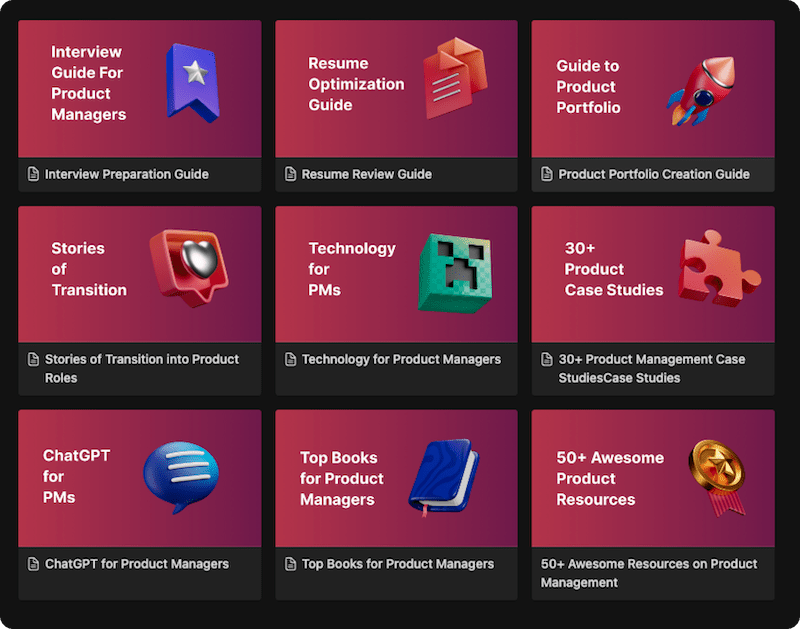Your team has a brilliant idea for a new feature. The brainstorming session was electric, the designs are ambitious, and everyone is excited. But there’s a catch: the full, gold-plated version would take months to build, test, and release. As a product manager, you’re now facing a classic dilemma: how do you validate if users will even want this feature before committing a huge amount of resources, and how can you deliver some value to them now instead of making them wait for the perfect version?
This is where the Minimum Viable Feature (MVF) becomes a product manager’s most strategic tool. It’s an approach that champions speed, learning, and customer value over feature bloat and risky “big bang” releases.
This guide is designed to make you a master of the MVF. We’ll break down exactly what it is, how it differs from its famous cousin, the MVP, and provide a step-by-step framework for defining and launching MVFs with confidence. By the end, you’ll have a powerful methodology for building better products, one valuable feature at a time..
MVF vs. MVP: Solving the Most Common Confusion
The terms MVF and MVP (Minimum Viable Product) are often confused, but they address fundamentally different scenarios. Understanding this difference is crucial for any product person.
The simplest way to think about it is: An MVP validates a new product idea. An MVF validates a new feature idea for an existing product.
Imagine you’re an inventor in the early 20th century.
- Your MVP is the first car. It might be basic—no radio, no air conditioning, maybe not even a roof—but it proves the core hypothesis: “People will pay for a personal, self-propelled vehicle.” It validates the entire product concept.
- Years later, your car company is successful. Now you have a new idea: a navigation system. Your MVF is the first, most basic GPS you add to your existing car model. It might only give turn-by-turn text directions, but it solves the core problem—”help the driver get to their destination”—and allows you to measure if customers use it and find it valuable before you invest in building 3D maps, traffic alerts, and voice commands.
| Aspect | Minimum Viable Product (MVP) | Minimum Viable Feature (MVF) |
| Scope | An entire (but minimal) product. | A single (but minimal) feature. |
| Goal | To validate a core business model or product hypothesis. | To add value to an existing product and validate a feature hypothesis. |
| Audience | Early adopters, visionaries. | The existing user base of a mature product. |
| Risk | High (the entire product idea could be wrong). | Lower (contained to the success or failure of one feature). |
| Question Answered | “Should we build this product?” | “Should we add this functionality to our product?” |
The Core Benefits: Why Should Product Teams Use MVFs?
Adopting an MVF strategy offers significant advantages for product teams and the business as a whole.
- Faster Time-to-Value: Instead of waiting months for a “perfect” feature, you deliver real value to your users in weeks.
- Reduced Risk and Waste: By building the smallest possible version, you minimize the development effort invested in an unproven idea. If the feature fails, you’ve learned a valuable lesson with minimal loss.
- Focused Development: An MVF forces your team to have disciplined conversations about what is truly essential, preventing “scope creep” and focusing engineering efforts on what matters most.
- Validated Learning: The primary goal of an MVF is to learn. You release it to test a hypothesis (e.g., “Users will save more items if we provide a ‘Save for Later’ button”). The resulting data tells you whether to iterate, pivot, or kill the feature.
- Incremental Improvement: MVFs fit perfectly into Agile development cycles, allowing for a continuous rhythm of releasing, learning, and improving the product based on real user feedback.
How to Define an MVF: The 4-D Framework
Defining an MVF is a disciplined art. It’s about ruthlessly prioritizing the core problem. Here is a simple framework to guide you.
[Visual Prompt: A vertical infographic showing the 4-D steps: Discover, Define, Develop, Deploy.]
Step 1: Discover the Problem
Don’t start with a solution. Start with a deep understanding of the user problem. What is the goal the user is trying to achieve? What is their “Job to be Done” (JTBD)? Conduct user interviews, analyze support tickets, and look at behavioral data to validate that the problem is real and worth solving.
- Example Question: “Our e-commerce users often browse for items but aren’t ready to buy immediately. They need a low-effort way to remember items they’re interested in.”
Step 2: Define the “Viable” Solution
Once the problem is clear, brainstorm the full, ideal “Version 1.0” of the feature. What would it look like with all the bells and whistles?
- Full Feature Idea: “A comprehensive ‘Wishlist’ feature. Users can create multiple named lists (e.g., ‘Birthday Ideas,’ ‘Home Office’), add notes to items, see price drop alerts, and share their lists with friends.”
Now, use a prioritization technique like MoSCoW to strip it down.
- Must-Have: The absolute core functionality. Without this, the feature is useless.
- Should-Have: Important, but not essential for the first release.
- Could-Have: Nice additions that can be added later if the feature is successful.
- Won’t-Have: Things that are explicitly out of scope for now.
For our Wishlist feature, the “Must-Have” is simply the ability for a user to save an item and view it later. Everything else is a “Should” or “Could.”
Step 3: Develop the “Minimum” Version
Based on the “Must-Have” list, define the technical scope of the MVF. This is what your engineering team will build.
- MVF Scope:
- Add a “Save for Later” icon to the product details page.
- When clicked, store the product ID in the user’s account data.
- Create a simple, single “Saved Items” page that lists the saved products.
- That’s it. No multiple lists, no sharing, no alerts.
Step 4: Deploy and Drive Learning
Release the MVF. You might release it to all users or to a specific segment first. Crucially, you must define how you will measure success.
- Hypothesis: “By providing a simple ‘Save for Later’ function, we will increase user engagement and future purchase intent.”
- Success Metrics:
- Percentage of users who click the “Save for Later” button.
- Average number of items saved per user.
- Conversion rate of saved items to purchased items within 30 days.
Analyze this data to decide what’s next: iterate on the feature (add the “Should-haves”), keep it as is, or remove it.
Real-World MVF Examples: From Concept to Code
Case Study 1: Spotify’s “Discover Weekly”
The full vision for Discover Weekly is a hyper-personalized, algorithmically perfect playlist delivered to every user each week.
- A plausible MVF: The first version could have been much simpler. It might have been a single, human-curated playlist of new music sent to a small segment of users. The goal wasn’t perfect personalization, but to test the core hypothesis: “Do users enjoy and engage with a weekly playlist dedicated to discovery?” The success metrics would have been the play rate and save rate from that playlist. Once the concept was proven viable, Spotify could invest in the complex personalization algorithms that power it today.
Case Study 2: The E-commerce “Save for Later” MVF
Let’s revisit our e-commerce example.
- The Big Idea: A full-featured Wishlist.
- The User Problem: “I want to remember this item but I’m not ready to buy it.”
- The MVF: A simple “Save” button that adds items to a single, unorganized list.
- Value to User: They can now easily find items they were interested in. The core problem is solved.
- Learning for Team: The team can measure how many people use the feature and if it leads to more sales.
- The Next Iteration (If Successful): Based on the learning, the team could then add the “Should-Have” features, like the ability to create multiple named lists.
Common Mistakes to Avoid When Building an MVF
- The “M” is Not Minimum (Scope Creep): The most common trap is letting “nice-to-have” features sneak into the initial release. Be ruthless in cutting scope back to the absolute core.
- The “V” is Not Viable: The opposite problem. Shipping a buggy, slow, or poorly designed feature that doesn’t actually solve the user’s problem. An MVF must be simple, but it must also be high-quality.
- Forgetting the “F” (Building an MVP by Accident): Sometimes teams get carried away and build a feature so large and complex that it’s essentially a new product within a product. Remember, an MVF should be a small, incremental enhancement.
- Skipping the Learning Loop: The biggest mistake of all is to ship an MVF and then immediately move on to the next thing without measuring its impact. The “learning” is the most valuable part of the process.
Conclusion: Build Less, Learn More
The Minimum Viable Feature is more than just a product management buzzword; it’s a strategic mindset. It’s a commitment to disciplined, user-centric development that prioritizes learning and value delivery above all else. By breaking down large, risky feature ideas into small, manageable experiments, you de-risk your roadmap and create a sustainable cycle of innovation.
Adopting the MVF approach empowers your team to stop asking “Can we build it?” and start asking “Should we build it?” and “What is the smallest thing we can build to find out?” It’s a powerful shift that leads to more focused teams, more successful products, and happier customers who see a constant stream of valuable improvements.
FAQ’s
A prototype is a mock-up or simulation used to test a design concept or user flow; it is not functional code. An MVF is a small but fully coded, working piece of software that is released to real users and delivers real value. You use a prototype to test an idea; you use an MVF to test a feature in the real world.
The Product Manager is ultimately responsible for defining the scope of an MVF. However, this decision should be made collaboratively with input from engineering (to understand technical feasibility and effort) and UX design (to ensure the solution is still usable and solves the core problem).
Not necessarily. For very small, low-risk, or high-confidence changes (like updating the text on a button or fixing a minor bug), an MVF approach might be overkill. MVF is most valuable for new features where there is uncertainty about user needs, technical implementation, or business value.
The work isn’t over; the learning begins. After launching, the team must analyze the data and user feedback. Based on this learning, they will make a decision to Persevere (iterate and add more functionality to the feature), Pivot (change the feature’s approach to better solve the problem), or Kill (remove the feature if it proved to be a bad idea)
Learn better with active recall quiz
How well do you know What Is a Minimum Viable Feature (MVF)? Let’s find out with this quick quiz! (just 10 questions)


